Intellectual Property Strategy
AGC contributes to its business through the integration of technology development and intellectual property.
At AGC, there are various systems to create new values.As shown in the figure below, systems related to intellectual property and standardization include
“Formulation and execution of strategies based on intellectual property information and non-intellectual property information”,
“Formulation and execution of standardization strategies and rule-making”, and
“Award system for inventors for creating patents that contribute to the business”.
In this section, these systems will be introduced.

- Formulation and execution of strategies based on intellectual property information and non-intellectual property information
- Formulation and execution of standardization strategies and rule-making
- Award System for Inventors and Intellectual Property Education
- Intellectual Property Activities Utilizing DX (Digital Transformation)
- Evolution of the intellectual property portfolio.
Formulation and execution of strategies based on intellectual property information and non-intellectual property information
The strategy on how to build and utilize our intellectual property portfolio for the maximization of business value is important. At AGC, we are advancing formulation and execution of strategies through the following steps:
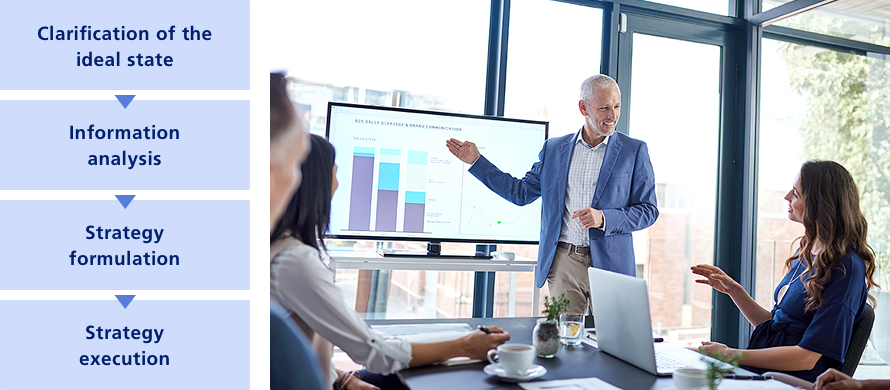
[Case Study] Window-mounted Camera
Window-mounted Camera is designed to capture outdoor scenes through window glass, featuring the convenience of effortless installation. In the development of this product, AGC adopted an “IP mix strategy” that combines patents, designs, and trademarks, and is actively implementing intellectual property initiatives to differentiate itself from competitors and secure an advantage in the market.
By leveraging such intellectual property strategies, AGC aims to deliver new value to society in the future.
| Clarification of the ideal state | Clarification of the features of Window-mounted Camera (1. Easy installation and removal, 2. Clear images through glass, 3. Design harmonized with the surrounding scenery) and the business goal (entry into data utilization business). |
|---|---|
| Information analysis | Analysis of information on competitors revealed that Window-mounted Camera's features are not fully protected by our intellectual property exposing a gap between ideal protection and actual protection. |
| Strategy formulation | Formulation of an “IP mix strategy” to fill this gap and an IP strategy aligned with the business goals. |
| Strategy execution | Implementation of IP strategies aimed at promoting the spread of Window-mounted Camera as a(short-term goal) and facilitating entry into the data utilization business as a (long-term goal). |

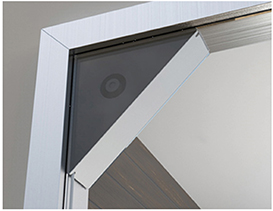
Window-mounted Camera: Design and Trademark
AGC is currently implementing an “IP mix strategy” that combines patents, designs, and trademarks. This strategy aims to create barriers to entry based on Window-mounted Camera's technical features (1 and 2) and design features (3). At the same time, it aims to enhance trust and peace of mind among building users and others to promote the spread of Window-mounted Camera.
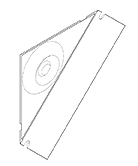

Formulation and execution of standardization strategies and rule-making
At AGC, we are actively promoting initiatives towards standardization and rule-making. With the aim of creating a new society and market, the CTO oversees company-wide standardization strategy activities, promoting human resource development through the implementation of standardization activities in corporate departments, business departments, and overseas bases, as well as the implementation of standardization education. A department dedicated to standardization, placed in the corporate department, serves a cross-company function and supports activities in each department. Moreover, the CTO hosts a company-wide standardization strategy meeting composed of representatives from each department and overseas bases, promoting the formulation and execution of strategic activities that contribute to the creation of the next generation society and establishing a competitive advantage.
Specifically, the steps for standardization and rule-making are divided into five stages: (1) rule investigation, (2) rule analysis, (3) strategy formulation, (4) rule-making, and (5) rule dissemination and utilization. In particular, we are strengthening strategic planning by positioning the processes of up to planning of strategy formulation as rule intelligence.

We are promoting the standardization activities with defining their concept and mission, and describing the ideal state and roadmap for standardization activities toward 2035 as part of the AGC Group strategy. a dedicated standardization department within the corporate division is taking the responsibility for cross-sectional foundational areas throughout the company, setting up company-wide strategy, addressing company-wide horizontal areas and also provides global support for standardization activities in each business division.
Concept/Mission of AGC Strategic Standardization
- Concept
-
Value society expects Connects Value AGC Creates
Create an environment/mechanism that AGC is selected by our stakeholder utilizing “standardization”
- Mission
-
Contribute to creating value through standardization activity
Promote collaboration/initiatives with standardization organizations (international/sectoral/academic, etc.), government, and contribute to creating value by technological/management strategy utilizing standardization
To develop standardization human resources, we are implementing standardization education, while defining the roles of standardization personnel in AGC's professional system and promoting certification. In the CNA (Cross-divisional Network Activity) of the standardization strategy, we are rolling out self-directed activities, for example sharing the knowledge and best practice of standardization and discussing its strategy, with the aims of individual and organizational growth and evolution. We are also promoting capacity building regarding standardization such as rule intelligence through the In-house secondary job system "Job-Challenge". In 2024, we contributed to the development of external human resources by participating as a lecturer in the Ministry of Economy, Trade and Industry's Standardization Strategy Human Resources Education Pilot Program.
| Standardization education | Implement education program by Rank-specific training and Elective training |
|---|---|
| AGC’s Professional system | Defines the roles of standardization personnel, and promoting certification |
| CNA Activity (Cross-divisional Network Activity) |
Share and discuss knowledge and best practice of standardization strategy |
| In-house secondary job system “Job-Challenge” | Capacity building through standardization work such as rule intelligence |
AGC actively participates in standardization activities at international standardization organizations such as ISO (International Organization for Standardization) and IEC (International Electrotechnical Commission), as well as in related activities conducted by consortiums in various regions and industries around the world. In ISO, we have taken the lead in the standardization of ZEB and are using its technical specifications to promote ZEB dissemination activities, primarily targeting emerging countries in Asia. Also, in IEC, we have led the standardization of methods for evaluating the strength of smartphone cover glass, contributing to healthy market growth and the proper evaluation of AGCʼs products. Furthermore, we are actively participating in the efforts for circular economy, biodiversity, hydrogen technology, and nanotechnology within ISO, and for avoided emission and fuel cells technology within IEC. We are also proactively participating in initiatives to standardize electronic displays. In Building Integrated Photovoltaics (BIPV), we have been leading the creation of JSA (Japanese Standards Association) standards with the aim of achieving both “energy creation” and “consideration for natural capital.” In the field of next-generation mobility, we are participating in industry associations to standardize functional window glass, in-vehicle displays, pedestrian protection, and other technologies.
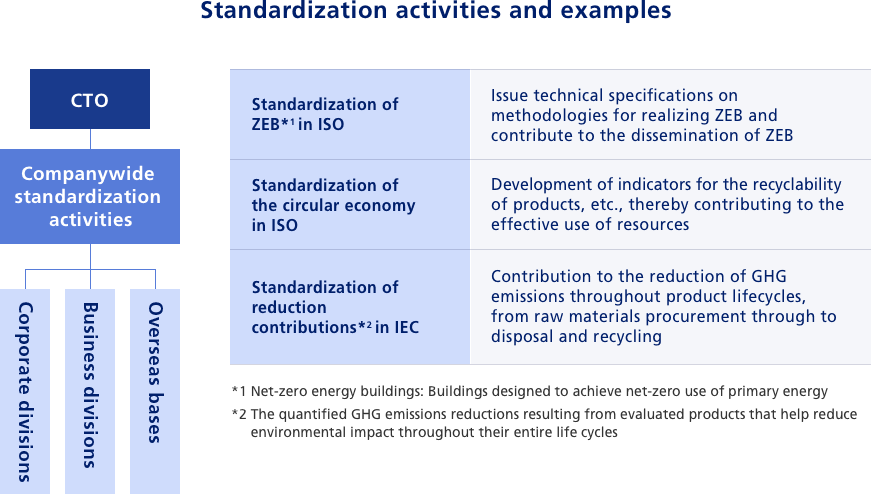
Award System for Inventors and Intellectual Property Education
AGC has introduced the Award System for Inventors to incentivize R&D members to work on inventions that influence the industry and result in the granting of patents. Inventors receive awards when patent applications are made and when patents are registered. The award paid upon registration of a patent is determined by AGC using original criteria, including the innovativeness and originality of the invention and its impact over competitors.
The current system was introduced in 2018. Compared with the previous system - in which most of the awards were paid to a small minority of inventors of technologies relating to highly profitable products - the current system has significantly extended the scope of awards, increased the percentage of inventors who receive awards, and shortened lead times from creating an invention until the award is paid.
In addition, we are focusing on employee education regarding intellectual property rights, such as patent applications and investigations. Together with the invention reward system, it is expected that there will be an increase in patents that truly contribute to the business.
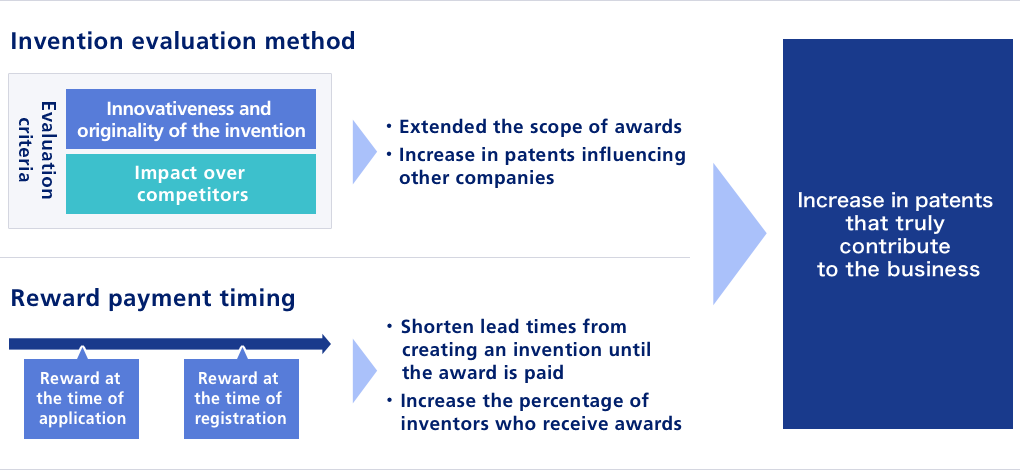
Intellectual Property Activities Utilizing DX (Digital Transformation)
At AGC, we are introducing digital transformation (DX) to improve the efficiency and quality of our intellectual property activities. While collaborating with DX-related departments within the company, we are promoting the use of new tools in intellectual property activities, such as generative AI, text mining, and RPA. This not only enhances operational efficiency but is also expected to create new value.
Evolution of the intellectual property portfolio
Under the supervision of the CTO, the Intellectual Property Division closely coordinates with the Technology General Division to build a strategic intellectual property portfolio that, from a company-wide perspective, facilitates ambidextrous development.
While continuing to strengthen the IP portfolio of our Core Businesses, we have also focused in recent years on expanding the IP portfolio of our Strategic Businesses as well as new businesses. For our Strategic Businesses and new businesses, in addition to the technology areas, including semiconductor materials, that we have been developing for some time, we have recently been strengthening our intellectual property portfolio in new technology areas such as high-speed communications and next generation batteries that are also related to next-generation mobility (see the figure below, “Changes in the AGC s Intellectual Property Portfolio over the Past Decade”).
The AGC is developing products that contribute to a decarbonized society and reduced environmental impact, and is also strengthening its intellectual property portfolio related to these products.
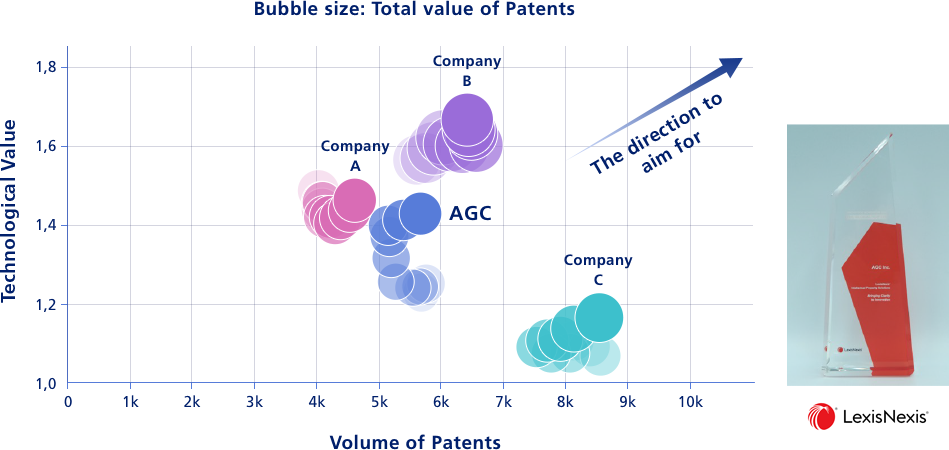
The figure below is a graph showing the annual changes in the quantity and quality of AGC's and competitors' patent portfolios over time, drawn using LexisNexis® PatentSight+. Since introducing the current award system for inventors, AGC has increased the volume of patents while maintaining high technological value. We will continue to aim forhigh levels in terms of both technological value and volume of patents.


